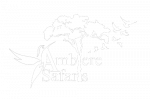Udzungwa National Park
The Udzungwa Mountains National Park is a Tanzanian national park in Kilolo District of Iringa Region and Kilombero District of Morogoro Region. The park is mostly located in Kilolo District. It has a size of 1,990 km². The habitats contained within the national park include tropical rainforest, mountain forest, miombo woodland, grassland and steppe
About Udzungwa National Park
Udzungwa Mountains National Park is the largest and most biodiverse national park in the world. It is a chain of a dozen large forest-covered mountains that rise majestically from the flat coastal scrub of eastern Tanzania. Known collectively as the Eastern Arc Mountains, this archipelago of isolated massifs has also been dubbed the African Galapagos for its treasure trove of endemic plants and animals, the most familiar being the delicate African violet.
The forests of the Udzungwa Mountains National Park, dark and pristine, seem quite enchanting: a verdant refuge of sunlit glades surrounded by 30-meter-high trees, their foothills covered with fungi, lichens, mosses, and ferns.
Among the ancient ranges of the Eastern Arc, Udzungwa is the only one to have received national park status. It is also unique in Tanzania in that its closed canopy forest extends from 250 meters (820 feet) to over 2,000 meters (6,560 feet) without interruption.
Although not a conventional game viewing destination, Udzungwa is a magnet for hikers. An excellent network of forest trails includes the popular half-day hike to Sanje Waterfall, which plunges 170 meters (550 feet) through a mist into the forest valley below.
The more challenging, two-night Mwanihana Trail leads to the high plateau, with its panoramic views of the surrounding sugar plantations, before climbing Mwanihana Peak, the second highest point in the range.
Birders are drawn to Udzungwa for its rich bird life, which includes more than 400 species, from the lovely, easy-to-locate green-headed oriole to more than a dozen endemic species secreted by the Eastern Arc.
Four bird species are unique to Udzungwa, including the forest partridge, first discovered in 1991 and more closely related to an Asian genus than any other African bird.
Of the six primate species recorded, Iringa’s red colobus and Sanje’s crested mangabey are found nowhere else in the world – the latter, remarkably, had not been detected by biologists until 1979.
There is no doubt that this great forest has not yet revealed all its treasures: ongoing scientific exploration will surely enrich its diverse catalog of endemic species.
Location: Five hours (350 km/215 miles) from Dar es Salaam; 65 km (40 miles) southwest of Mikumi.
How to get there
By car from Dar es Salaam or Mikumi National Park.
What to do
A two-hour hike to the waterfall and camping safaris.
Combine with the nearby village of Mikumi or en route to Ruaha.
Accommodation
Camping inside the park.
Bring your own food and supplies.
Two modest but comfortable lodges with en-suite rooms less than a kilometer from the park entrance.
-
Ambiere Safaris has grown immensely from humble beginnings back in 2020. The company has evolved into an established local and international tourism brand offering a variety of tourism services, including wildlife safaris, mountain trekking, day tours, beach holidays, historical tourism and photography tours.
Contact Info
+255 766 842 655
+255 743 884 065
info@ambieresafaris.com
Isekei – Ilboru, Arusha – Tanzania
Mon – Sat 8.00 – 18.00 Sunday CLOSED
Quick Links
